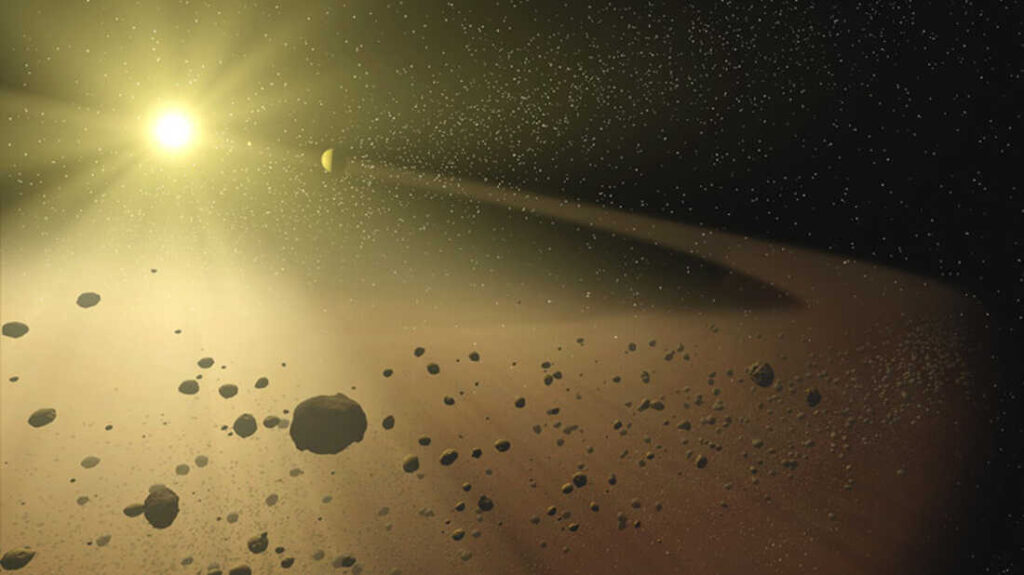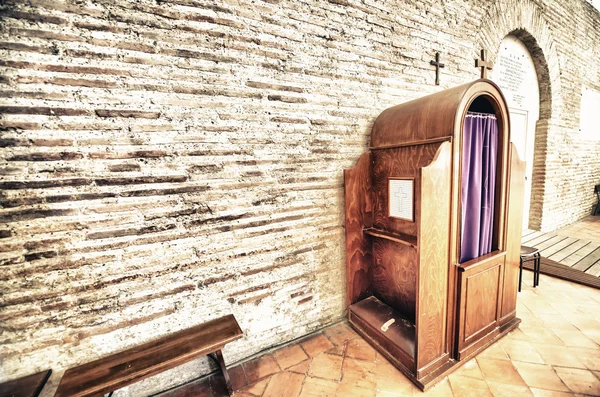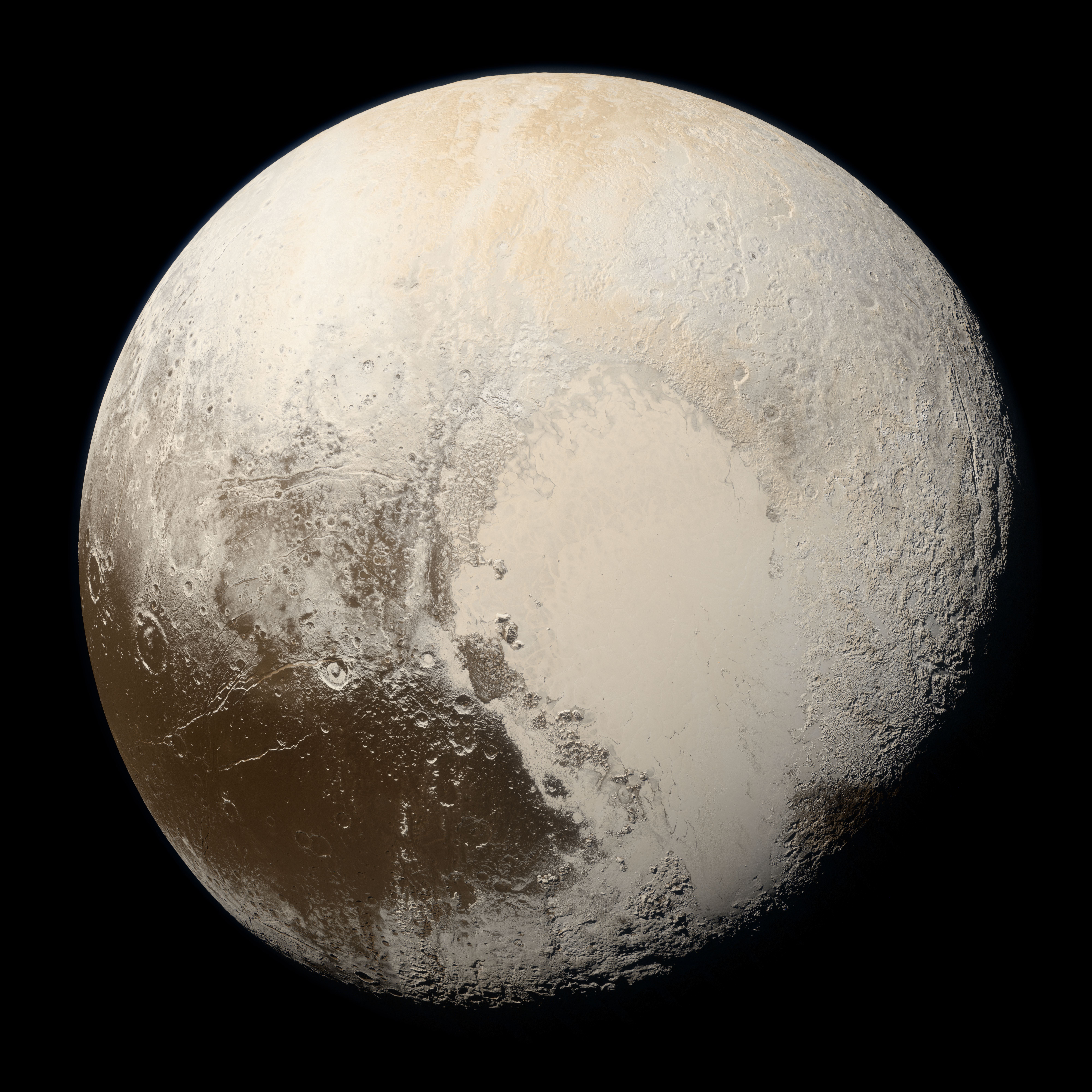Table of Contents
A Celestial Divide: The Asteroid Belt’s Place in the Solar System
The asteroid belt, a vast and complex region between Mars and Jupiter, serves as a cosmic boundary separating the rocky inner planets from the immense gas giants. Containing millions of asteroids, this region provides key insights into planetary formation and the early solar system. Among its many inhabitants, Ceres, the largest and most massive object in the belt, is classified as a dwarf planet, spanning 590 miles (940 km) in diameter. Other significant asteroids, like Vesta, Pallas, and Hygiea, vary in composition, from metallic-rich to carbonaceous bodies. Scientists theorize that, had Jupiter’s immense gravitational influence been weaker, these rocky remnants might have formed a full-fledged planet rather than remaining a dispersed collection of celestial bodies.
Despite its portrayal in movies as a chaotic, obstacle-ridden zone, the asteroid belt is mostly empty space, with vast distances separating individual asteroids. If the belt’s total mass were combined, it would still be only a fraction of Earth’s Moon. Some asteroids have highly elliptical orbits, occasionally bringing them closer to Mars or Jupiter, while others remain in stable regions such as the Kirkwood Gaps, areas cleared by Jupiter’s resonant gravitational forces. The study of these space rocks provides valuable information about the solar system’s primordial materials, giving scientists a glimpse into the conditions present over 4.6 billion years ago.
The First Clues: Early Observations and the Titius-Bode Law
The Titius-Bode Law, first proposed in the 18th century, attempted to explain the spacing of planets in the solar system through a mathematical sequence. This formula suggested that each planet’s orbit followed a predictable pattern, with each successive planet roughly twice as far from the Sun as the previous one. The pattern correctly estimated the positions of Uranus and Ceres before their discoveries, leading astronomers to speculate about a missing planet between Mars and Jupiter. The law’s accuracy in some cases fueled excitement, prompting a formal search for this unknown celestial body. This pursuit directly contributed to the discovery of the asteroid belt, fundamentally reshaping planetary science.
Although the Titius-Bode Law suggested an orderly planetary system, later discoveries showed that it was not a universal rule. Neptune’s orbit did not conform to the predicted spacing, casting doubt on the law’s validity as a strict scientific principle. Nevertheless, its influence on early astronomy was profound, as it inspired the Celestial Police—a group of dedicated astronomers—to search for new planets. Their efforts led to the identification of Ceres, Pallas, Juno, and Vesta, revealing that instead of a single planet, the asteroid belt contained numerous smaller bodies. This breakthrough helped scientists recognize the complexities of planetary formation.
A Breakthrough Discovery: Ceres and the Dawn of Asteroid Science
On January 1, 1801, Italian astronomer Giuseppe Piazzi made a historic breakthrough when he discovered Ceres, a celestial body orbiting between Mars and Jupiter. Initially, Piazzi believed he had found a new planet, naming it after the Roman goddess of agriculture. However, as astronomers tracked Ceres’ movement and studied its size, they realized it was significantly smaller than any known planet. This led to further investigations, and within a few years, additional objects—Pallas (1802), Juno (1804), and Vesta (1807)—were discovered in the same region. The presence of multiple small bodies rather than a single planet challenged existing models of planetary formation, shifting scientific understanding toward a new category of celestial objects.
As astronomers continued to study this region, they recognized that these newly discovered bodies were part of a larger population within the asteroid belt. William Herschel coined the term asteroid in 1802 to describe these objects, which appeared as mere points of light in telescopes, unlike planets that resolved into disks. Among them, Ceres remains the largest, accounting for about one-third of the asteroid belt’s total mass. In 2006, the International Astronomical Union (IAU) reclassified Ceres as a dwarf planet, placing it in the same category as Pluto due to its size and gravitational characteristics.
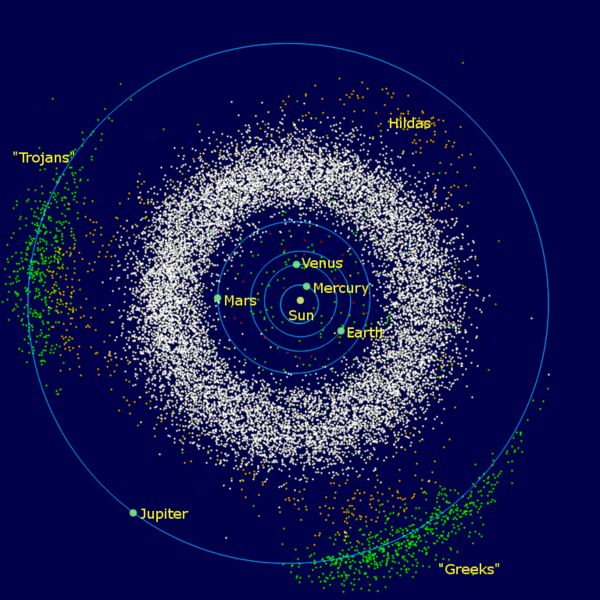
This image is based on data found in the en:JPL DE-405 ephemeris, and the en:Minor Planet Center database of asteroids (etc) published 2006 Jul 6.
Understanding the Composition: Rocky Relics of the Early Solar System
The asteroid belt is a preserved remnant from the solar system’s formation, offering scientists a unique opportunity to study the materials that existed over 4.6 billion years ago. These ancient objects are categorized into three primary types based on their composition: carbonaceous (C-type), silicate (S-type), and metallic (M-type) asteroids. C-type asteroids, which dominate the belt at approximately 75%, are dark, carbon-rich bodies that contain water-altered minerals and organic compounds. Their presence suggests that water was abundant in the early solar system, potentially influencing the development of life. S-type asteroids, composed mainly of silicate rock and iron-nickel metals, are more reflective and resemble the crust and mantle material found on rocky planets like Earth and Mars.
M-type asteroids, though less common, provide insights into planetary core formation, as they consist primarily of nickel and iron, much like the metallic cores of planets. Scientists theorize that these asteroids may be fragments of protoplanets that were disrupted by collisions in the early solar system. The asteroid belt has been a key target for space missions, with spacecraft like NASA’s Dawn and Japan’s Hayabusa2 gathering critical data on their composition. By analyzing asteroid spectra and returning samples to Earth, researchers are piecing together the processes that shaped planetary bodies, shedding light on the conditions that led to the formation of terrestrial planets.
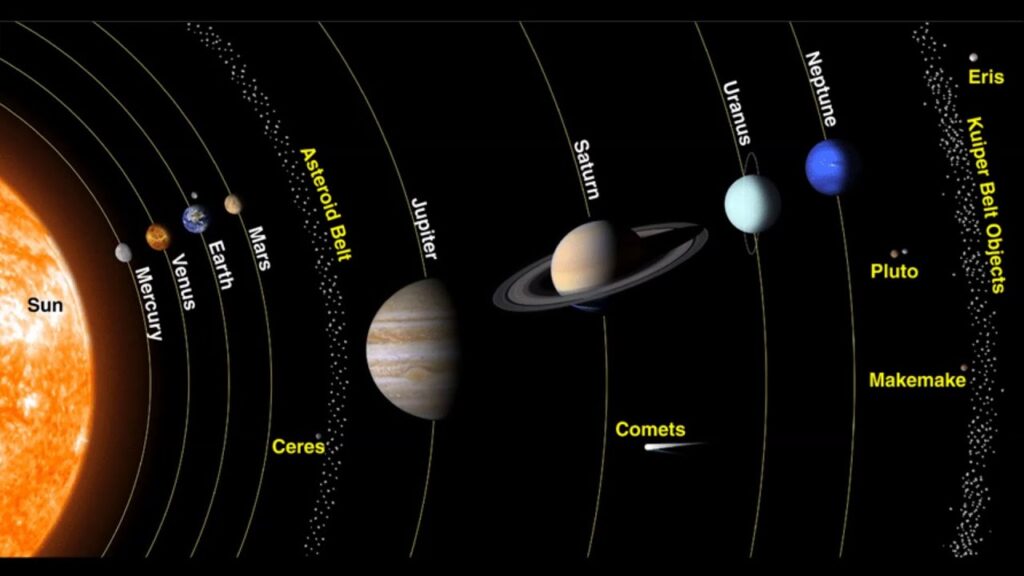
Jupiter’s Gravitational Influence: Why a Planet Never Formed
The asteroid belt exists as a fragmented region of space rather than a fully formed planet due to the immense gravitational influence of Jupiter. In the early solar system, planetesimals—small celestial bodies that serve as the building blocks of planets—attempted to coalesce in this region. However, Jupiter’s powerful gravitational pull continuously disrupted this process, preventing the material from accumulating into a single planetary body. Instead of forming a stable protoplanet, the asteroids remained scattered, colliding and breaking apart over billions of years. This gravitational interference also created Kirkwood Gaps, empty spaces within the asteroid belt where Jupiter’s resonances have cleared out material, further preventing planetary formation.
Even today, Jupiter’s gravity continues to shape the structure and motion of the asteroid belt. Certain asteroids that stray too close to Jupiter’s gravitational field are either flung toward the Sun, where they may become near-Earth objects (NEOs), or ejected entirely from the solar system. Some asteroids, like those in the Hilda family, remain in stable orbits influenced by Jupiter’s pull, while others, such as the Trojan asteroids, share Jupiter’s orbit at Lagrange points. By studying the complex interactions between Jupiter and the asteroid belt, scientists gain a deeper understanding of planetary formation and the long-term evolution of the solar system.
Collisions and Evolution: The Dynamic Nature of the Asteroid Belt
Although asteroids in the asteroid belt are separated by vast distances, their orbits occasionally bring them into violent collisions. Over millions of years, these high-speed impacts have shattered larger asteroids into smaller fragments, forming distinct asteroid families that share similar compositions and orbital paths. One of the most well-known families is the Vesta family, originating from a massive impact on the asteroid Vesta, the second-largest object in the belt. Another notable group is the Eos family, which has unique spectral properties that suggest a different mineral composition from surrounding asteroids. These families provide valuable information about asteroid formation, as well as the history of impacts that shaped the solar system.
Some fragments from these collisions become meteorites, which eventually reach Earth’s surface, offering direct physical samples for scientific study. Others, influenced by gravitational forces, are ejected from the asteroid belt and may become near-Earth asteroids (NEAs). These space rocks, such as Apophis and Bennu, have orbits that bring them close to our planet, making them potential impact threats. To prevent a future collision, astronomers actively track NEAs using telescopes and radar, allowing scientists to refine their orbital predictions. Space agencies, including NASA and ESA, continue to develop planetary defense strategies, such as asteroid deflection techniques, to mitigate these risks.
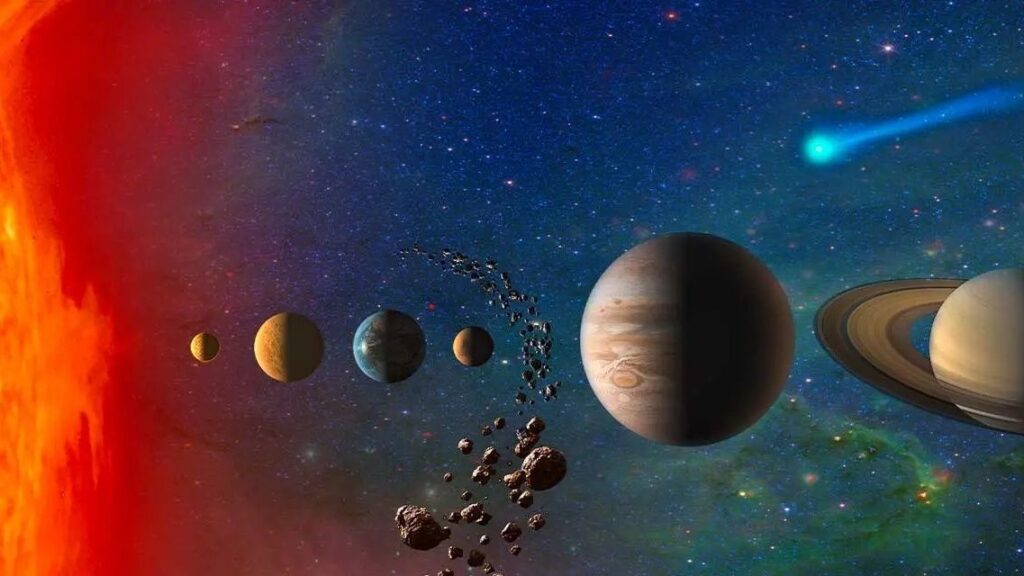
Future Missions and the Next Steps in Asteroid Exploration
The continued study of the asteroid belt is crucial for advancing our understanding of planetary formation and developing new technologies for space exploration. NASA’s Psyche mission, set to launch in 2026, will explore the metal-rich asteroid 16 Psyche, believed to be the exposed iron-nickel core of an ancient protoplanet. By analyzing its composition, scientists hope to gain insights into the internal structure of terrestrial planets like Earth, Venus, and Mars. Additionally, Japan’s Hayabusa2 and NASA’s OSIRIS-REx missions have already returned samples from near-Earth asteroids Ryugu and Bennu, respectively, providing valuable material that helps us understand the chemical makeup of asteroids and their potential role in delivering organic compounds to early Earth.
Beyond scientific exploration, the asteroid belt is also being considered for resource utilization and planetary defense strategies. The ESA’s Hera mission, working with NASA’s DART (Double Asteroid Redirection Test), is actively testing methods to alter an asteroid’s trajectory—technology that could one day protect Earth from impact threats. In the long term, asteroid mining could become a reality, as companies explore the possibility of extracting valuable metals such as platinum, nickel, and iron from asteroids. These resources could support deep-space missions, reducing the need to transport materials from Earth. As space agencies and private enterprises push forward, the asteroid belt remains a key frontier in both exploration and future space industries.

Conclusion: A Cosmic Frontier Waiting to Be Explored
The asteroid belt is more than a collection of lifeless space rocks—it is a historical archive of the solar system and a stepping stone for future exploration. Over the past two centuries, astronomers have made significant strides in understanding this region, from the discovery of Ceres, Vesta, and Pallas to the launch of missions like Dawn, OSIRIS-REx, and Hayabusa2. These efforts have revealed essential information about the chemical composition, origins, and evolutionary history of asteroids. The detection of water-bearing minerals on Ceres raises intriguing possibilities about ancient water reservoirs, while the presence of valuable metals in metallic asteroids fuels discussions about resource utilization.
Beyond its role in planetary science, the asteroid belt could play a pivotal role in human space expansion. With companies exploring the feasibility of asteroid mining, the extraction of nickel, iron, platinum, and water could one day support space stations, deep-space missions, and even Mars colonization. Additionally, the belt serves as a testing ground for planetary defense strategies, helping scientists refine methods for deflecting potentially hazardous asteroids. Whether as a source of scientific discovery, a hub for resource extraction, or a key location for planetary protection, the asteroid belt represents both our past and our future—a cosmic frontier waiting to be explored further.
How useful was this post?
Click on a star to rate it!
Average rating / 5. Vote count:
No votes so far! Be the first to rate this post.
Author
-
Meet Dr. Kendall Gregory, a highly accomplished professional with a remarkable academic background and a deep passion for empowering individuals through knowledge. Dr. Gregory’s educational journey began with a Bachelor of Science degree, followed by a Doctor of Chiropractic Medicine, focusing on diagnosing and treating musculoskeletal conditions. He further expanded his expertise with a Master's degree in Oriental Medicine, specializing in acupuncture and Chinese herbology, and a Master's degree in Health Care Administration, emphasizing his dedication to improving healthcare systems. Dr. Gregory combines his extensive knowledge and practical experience to provide comprehensive and integrative healthcare solutions. Through his writings, he aims to inspire individuals to take charge of their health and make informed decisions.
View all posts

